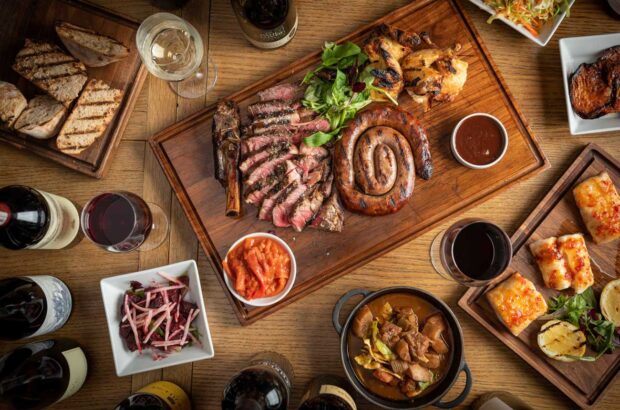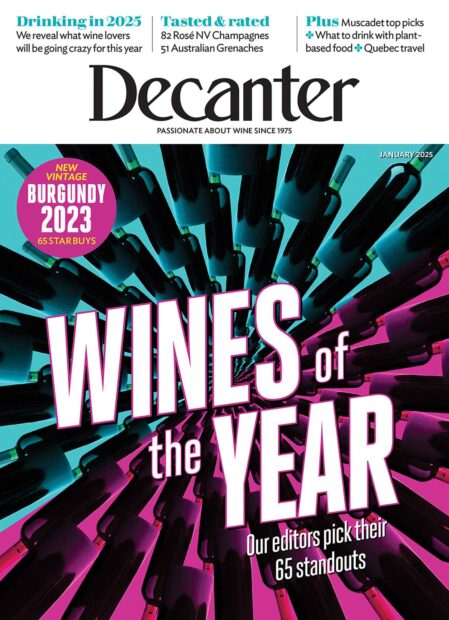Andrew Jefford takes a close look at Sardinia’s only DOCG wine, Vermentino di Gallura, and wonders if Vermentino will ever be considered one of the world’s great white wines.
Some varieties seem destined to be more enjoyed than admired – like shy, submissive, sweet-tempered Vermentino. Will it always be thus? Does it matter? Are we just waiting for some southern Dagueneau, Gravner or Humbrecht to come along to push the variety and its vineyards to their expressive limits and make us all look at it anew? Or will we one day realise that discretion, subtlety and fine-sewn grace are underrated white-wine virtues which might actually provide more drinking pleasure than strenuous exhibitions of oak, acidity and herbaceousness?
I touched on this question last year in considering whether Liguria’s Pigato really is the same variety as Vermentino, but a recent visit to Sardinia moved the argument on a little.
Vermentino in Italy
Vermentino’s heartland is best expressed in terms of maritime zones: the Golfe du Lion, the Ligurian sea, the Tyrrhenian sea. It begins to come to prominence, in other words, in coastal Languedoc, and then performs as the key white variety for Provence, for Liguria, for Corsica and for Sardinia. It drifts off through northwest and central Italy (the Piedmontese call it Favorita), but fades from significance in the south and the east, nor does it makes much headway in Catalonia.
I tend to think of it as the yachtsman’s white, and probably never better than when consumed on some deck or other, faced with a gently undulating horizon, a vast expanse of glittering water, a distant deserted cove, and nothing much to do during the afternoon other than terminate it with a secluded swim.
The more I taste it with food, though, the more I realise that its gastronomic potential is under-rated; indeed Sardinia’s finest Vermentino wines seem to have an uncanny ability to taste saline with certain foods, but almost sweet when drunk on their own. It is Vermentino di Gallura which provides Sardinia with its only DOCG wine, furthermore, so (if official sanction is anything to go by) this might be considered a superior wine to the Cannonau, Carignano and Cagnulari I wrote admiringly about two weeks ago. It is certainly Italy’s grandest and most intricate Vermentino.
Vermentino is also Corsica’s most significant white, and for me it’s one reason why Provence’s underrated, succulent and creamy white wines are often a better buy than its sometimes over-dry reds. Remember, too, that it plays a significant role in some leading rosé wines in Provence – notably in Ch d’Esclans’ three top cuvées Garrus, Les Clans and Rock Angel, all of which are co-fermented Grenache/Vermentino blends. I don’t think it will ever make a great white for cellaring, but I certainly think that it makes a tempting alternative to the greatest white wines based on Sauvignon Blanc, on Viognier, on Marsanne and on Roussanne – fine wines, in other words, for drinking with close scrutiny when young.
A significant difference between Vermentino di Gallura and many of its Mediterranean peers is that this a wine of granite soils, not of limestone. Local growers emphasise the importance of those granite sands to the style of the wines – they claim reflected light from the soil provides better berry ripeness, and (sometimes fancifully but in the best case accurately) that decomposed granites give the wine a ‘mineral’ or non-fruity cast to add dignity and seriousness to the fruity notes. “You should recognize the Mediterranean vegetation in the wine,” adds grower Gioacchino Sini of Unmaredivino. A bitter-almond finish is also much admired locally.
Note too, though, that the fingers of the mistral (see last week’s blog) reach down to massage Sardinia’s north, and in cases where the vineyards are close to the sea those winds can give the wines a saline character, even before you’ve taken a mouthful of risotto. Other Vermentino di Gallura is planted at altitude (up to 600m is permitted), and this can provide a crisper, fresher alternative. A lack of ambition, of course, will usually deliver a pleasant, honorable, food-friendly but neutral white of the sort you’ll find all over Italy.
According to Dr Daniela Pinna, the President of the Vermentino di Gallura DOCG, production is now around six million bottles a year and is scheduled to reach seven or eight based on new plantings coming on stream in the next half-decade. Vermentino di Gallura, in other words, plays in the Gavi league. In my tour of Sardinia, it was noticeable that the Vermentino di Gallura producers had a shinier collection of cars than producers in other parts of the island (vehicle size and youth is a sure-fire indicator of prosperity in the wine world), underlining that national approbation.
Sardinia’s granite-soiled northeast, in other words, is an exciting place to tease the yachtsman’s white towards greatness. The next couple of decades, perhaps, will prove whether it can get there.
Vermentino di Gallura: nine of the best plus an interloper
Cantina Tani, Taerra, Vermentino di Gallura 2015
Grown at 350 m in a single vineyard of pure granite debris planted in 1987, this is a very pure, fresh, cleanly defined wine with the peachy sweetness of youth still clinging to it, perfuming the apple, grape and pear fruits. It has vinous drive too, though, and a stony twinkle to finish. Complete, charming and characterful. 89 points (/ 100)
Cantina Li Seddi, Lagrimedda, Vermentino di Gallura 2015
A stark contrast to Taerra above, this wine is grown very close to the sea in vineyards of pure white sand. At first it reminded me, in its saline lightness and grace, of a salty if supercharged mineral water, but then the crisp, perfumed fruit begins to emerge, too, with plenty of fresh supported acidity and zesty pith. Neptune’s house white. 90
Cantina del Vermentino di Monti, Funtanaliras, Vermentino di Gallura 2015
A sure-handed, quietly classical incarnation of Vermentino di Gallura: intense, pure, sappy and soft, with vivid apple fruit sweetened and perfumed with notes of aniseed and nougatine. (And there are three quarters of a million bottles of this wonderfully drinkable wine produced annually.) 89
Cantina del Vermentino di Monti, Arakena, Vermentino di Gallura 2014
A cru wine from this leading cooperative, Arakena grows at between 300 and 450 m on weathered granite soils, and is given a period of skin maceration before being fermented in big wood. This ambitious wine is deep gold in colour, with scents of jasmine, apricot, nougat, fresh bread and cream, and with complete, tongue-coating, mouth-filling flavours in which fruit, flesh, stone and salt seem to combine in perfect equilibrium. 92
Cantina Gallura, Canayli, Vendemmia Tardiva, Vermentino di Gallura 2015
Picked in mid-October, this ‘late-harvest’ version is not a sweet wine but a richly dry one, cascading with juicy pear and white aniseed. 89
Siddùra, Maìa, Vermentino di Gallura 2014
Grown at 250m on granite, and picked promptly though not prematurely, this is a Vermentino di Gallura where the emphasis is on spring leaf and stone as well as apple and lemon fruit: a Mediterranean echo, if you like, of a good Sancerre. Sappy, long, mouthwatering. 90
Unmaredivino di Goacchino Sini, Bianco Smeraldo, Vermentino di Gallura 2014
This prettily labeled wine, grown from fruit from the Su Crabileddu sub-zone of the village of Berchidda and vinified after a long period of cool storage on its skins, has remarkable aromatic finesse, purity and restraint: orange, jasmine, peach, nectarine and apple in bright, pristine, clear yet creamy style. 92
Unmaredivino di Goacchino Sini, Terra e Mare, Vermentino di Gallura 2014
Made in the same way, but this time using fruit from the sub-zone of Muros, this is greener and sappier in style though crafted in the same spirit of purity and restraint. 91
Masone Mannu, Costarenas, Vermentino di Gallura 2014
One of three separate cuvées made at this well-funded and ambitious winery, Costarenas (based on 35-year-old vines, and given 12 hours’ skin maceration followed by five months on lees, all in steel) is concentrated, sappy and stony — imagine almond milk mingled with birch sap. Vivid, commanding and deep, with sustained acidity. 91
Paolo Depperu et Figli, Ruinas, Colli di Limbara 2014
Here’s the interloper: an exemplary Vermentino grown on granite at 350m, but also including a percentage of other aromatic white grape varieties, hence its IGT status. There are delicate, teasingly fruity scents, followed by a creamy, perfumed mouthful of sumptuous complexity and depth. Almost honeyed, almost saline, with notes of pear, almond and jasmine. 91
More Andrew Jefford columns:

Jefford on Monday: Dr Mistral

Jefford on Monday: Sardinia’s Secrets
Andrew Jefford visits Italy’s ‘other’ wine island...

Jefford on Monday: Hitting first
Andrew Jefford looks at two recent political controversies for French wine, and considers their impact...

Jefford on Monday: One from the heart?







